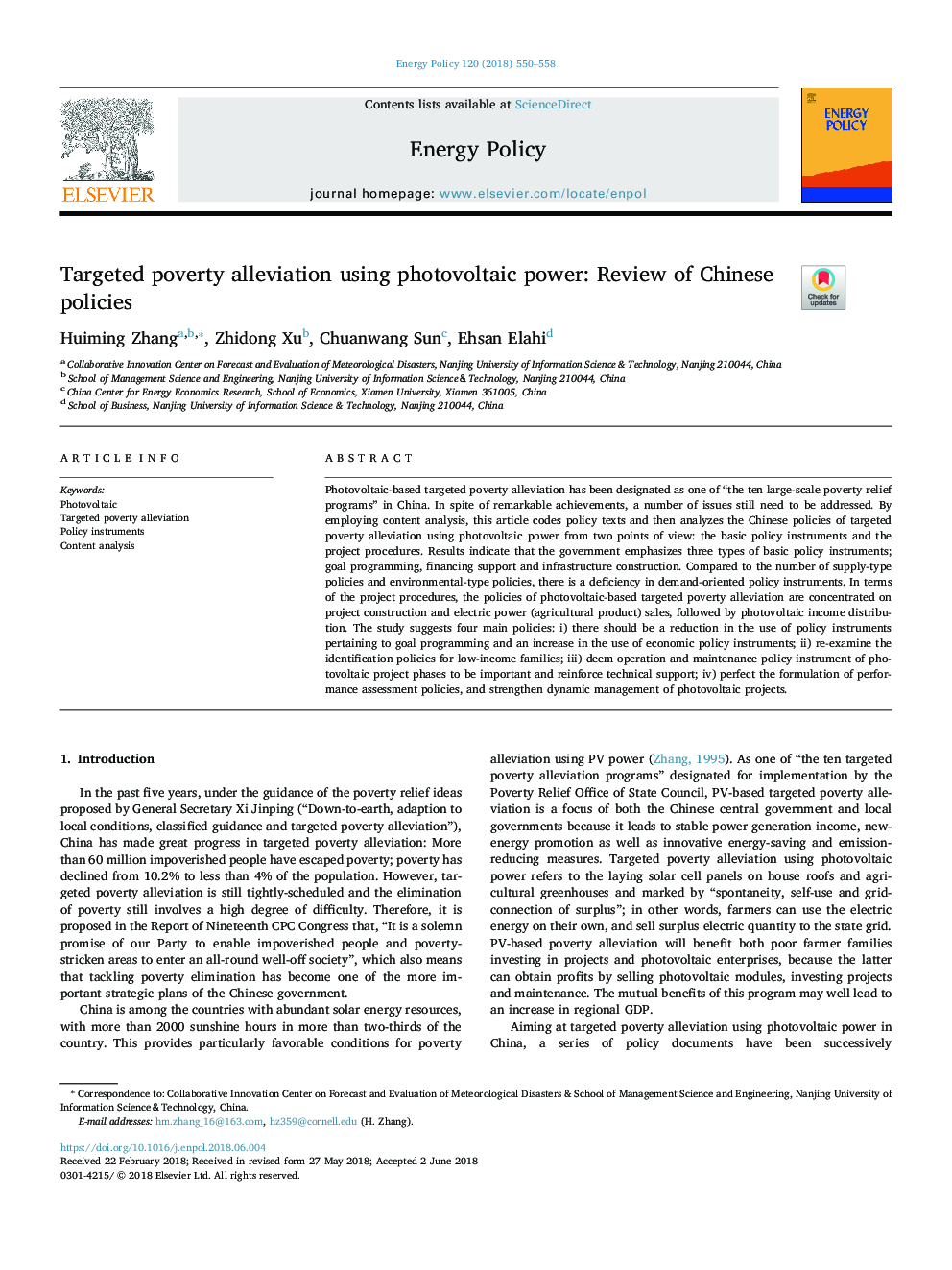| Article ID | Journal | Published Year | Pages | File Type |
|---|---|---|---|---|
| 7396932 | Energy Policy | 2018 | 9 Pages |
Abstract
Photovoltaic-based targeted poverty alleviation has been designated as one of “the ten large-scale poverty relief programs” in China. In spite of remarkable achievements, a number of issues still need to be addressed. By employing content analysis, this article codes policy texts and then analyzes the Chinese policies of targeted poverty alleviation using photovoltaic power from two points of view: the basic policy instruments and the project procedures. Results indicate that the government emphasizes three types of basic policy instruments; goal programming, financing support and infrastructure construction. Compared to the number of supply-type policies and environmental-type policies, there is a deficiency in demand-oriented policy instruments. In terms of the project procedures, the policies of photovoltaic-based targeted poverty alleviation are concentrated on project construction and electric power (agricultural product) sales, followed by photovoltaic income distribution. The study suggests four main policies: i) there should be a reduction in the use of policy instruments pertaining to goal programming and an increase in the use of economic policy instruments; ii) re-examine the identification policies for low-income families; iii) deem operation and maintenance policy instrument of photovoltaic project phases to be important and reinforce technical support; iv) perfect the formulation of performance assessment policies, and strengthen dynamic management of photovoltaic projects.
Related Topics
Physical Sciences and Engineering
Energy
Energy Engineering and Power Technology
Authors
Huiming Zhang, Zhidong Xu, Chuanwang Sun, Ehsan Elahi,
